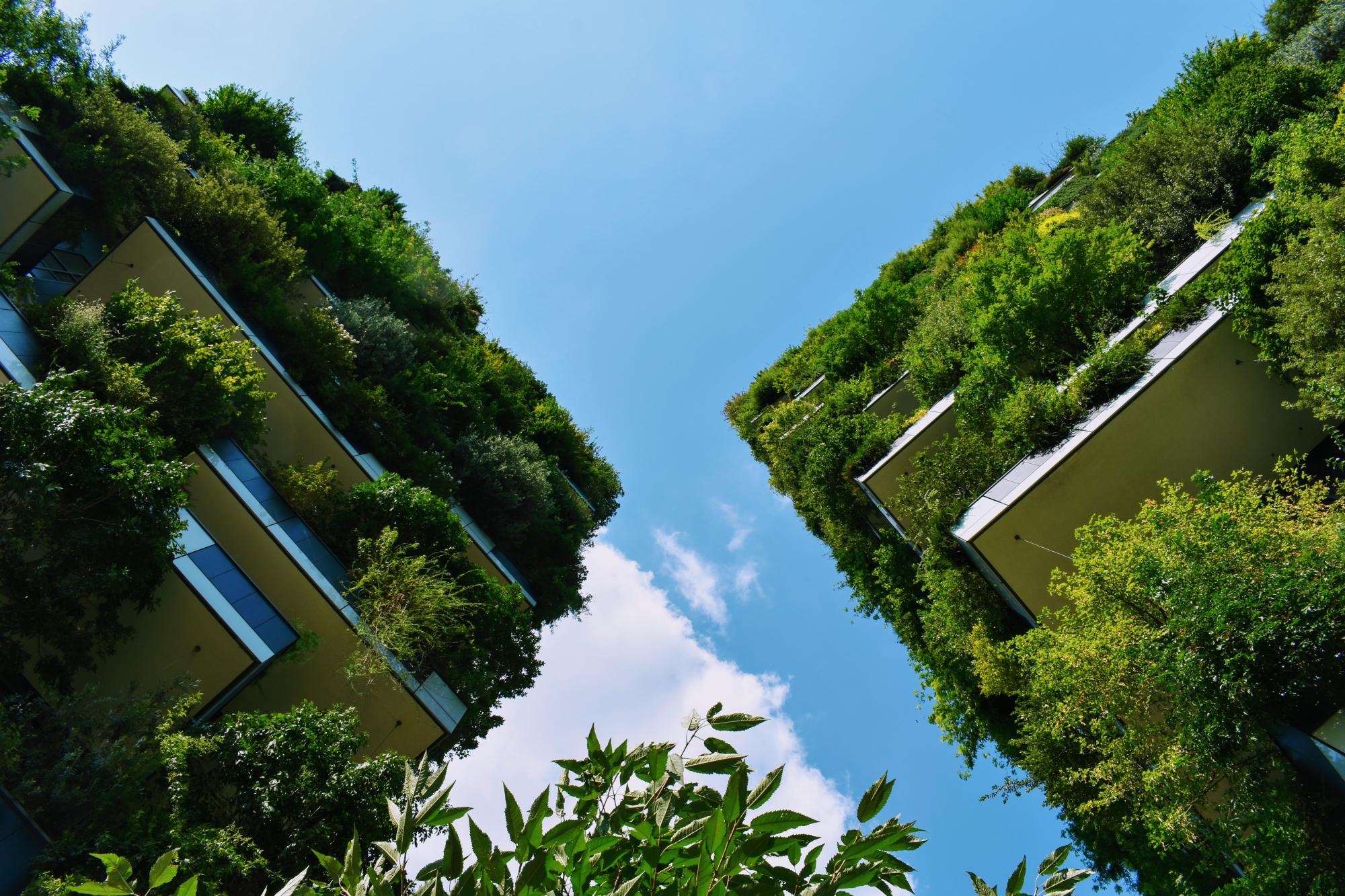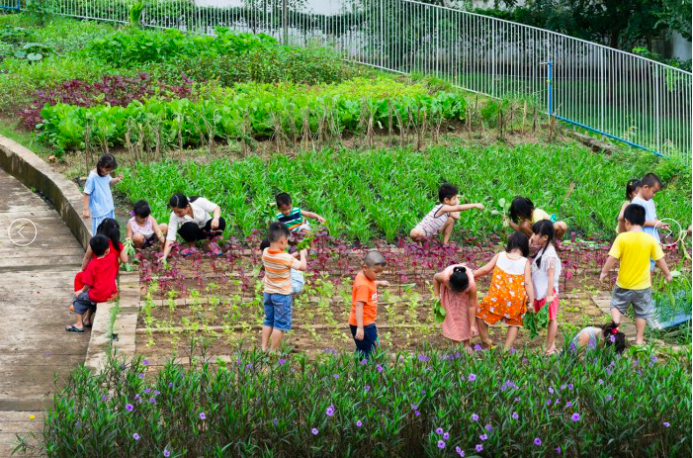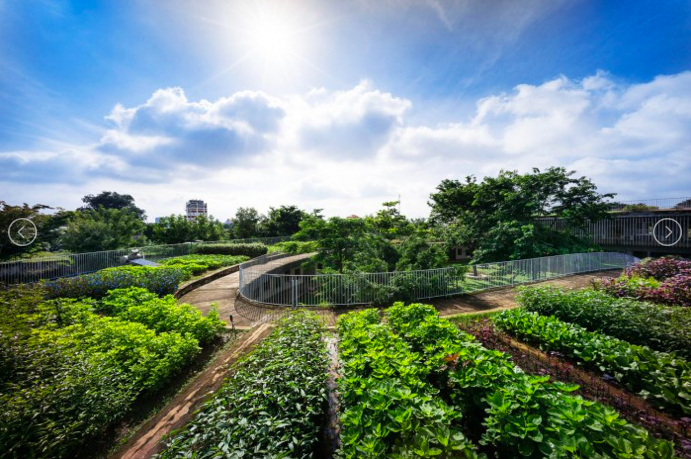Food safety has come a long way and today it is one of the biggest challenges globally, especially in the developing world. According to the World Bank, Viet Nam is one of the countries prone to food-borne illnesses and food safety is a major concern for the public there (1). Increased droughts, floods and salinization have further enhanced and endangered food supplies. Access to healthy food is not optimal. To solve this issue, some Vietnamese private companies came up with a solution. In 2013, a shoe factory in the city of Dongnai (located around 30 km away from Ho Chi Minh City) established a welfare facility for the factory's employees, called Farming Kindergarten. The building was designed with the idea of serving 700 children of the workers by providing healthy food, as well as environmental education. The design includes a green roof where vegetables are cultivated alongside playgrounds for the children. The roof is designed in such a way that it is the perfect environment where children learn about the importance of agriculture and strengthen their connection with nature (2, 4, 6). The harvests from the garden are distributed to the children's families, contributing to a rather small family budget of Vietnamese workers (the average income of Vietnamese workers is just 180 USD per month) (7).
Overview
Nature-based solution
- Community gardens and allotments
- Community gardens
- Nature on buildings (external)
- Green roofs
- Green walls or facades
Key challenges
- Climate action for adaptation, resilience and mitigation (SDG 13)
- Climate change mitigation
- Green space, habitats and biodiversity (SDG 15)
- Green space creation and/or management
- Social justice, cohesion and equity (SDG 10)
- Environmental education
- Sustainable consumption and production (SDG 12)
- Sustainable consumption
- Sustainable production
Focus
Project objectives
Implementation activities
Climate-focused activities
Climate change mitigation:
- Implement solutions to help reducing energy consumption or support the use of sustainable energy resources
Main beneficiaries
- Private sector/Corporate/Company
- Citizens or community groups
- Young people and children
Governance
Management set-up
- Led by non-government actors
Type of initiating organisation
- Private sector/corporate actor/company
Participatory approaches/ community involvement
- Dissemination of information and education
- Joint implementation (e.g. tree planting)
- Co-management/Joint management
Details on the roles of the organisations involved in the project
Project implemented in response to ...
Financing
Total cost
Source(s) of funding
- Corporate investment
Type of funding
- Direct funding (grants, subsidies, or self-financed projects by private entities)
Non-financial contribution
- Provision of land
- Provision of labour
- Provision of expertise
- Exchange of services
- Citizens (e.g. volunteering)
Impacts and Monitoring
Environmental impacts
- Climate change
- Lowered local temperature
- Reduced emissions
- Water management and blue areas
- Increased protection against flooding
- Improved stormwater management
Economic impacts
- Other
Socio-cultural impacts
- Social justice and cohesion
- Increased visibility and opportunity for marginalised groups or indigenous peoples
- Increased involvement of locals in the management of green spaces
- Education
- Increased support for education and scientific research
Type of reported impacts
Presence of formal monitoring system
Presence of indicators used in reporting
Presence of monitoring/ evaluation reports
Availability of a web-based monitoring tool
References
2. Source link. 2021. Farming Kindergarten – ngôi trường mẫu giáo xanh ở Biên Hòa với sân chơi rộng lớn trải dài liên tục trên mái [Farming Kindergarten – a green kindergarten in Bien Hoa with a large playground stretching continuously on the roof], available at Source link (Accessed on January 26, 2023).
3. Hai, L. 2021. Khám phá nhà trẻ Farming kindergarten – Công trình xanh. [Explore Farming kindergarten – Green building], available at Source link (Accessed on January 26, 2023).
4. Nguyen, O. (2016). Farming Kindergarten Listed in the World’s 30 Best New Buildings, available at Source link (Accessed on January 26, 2023).
5. VTN Architects. (n.d.). Farming Kindergarten, available at Source link (Accessed on January 26, 2023).
6. World Architecture Community (2020). Farming Kindergarten, available at Source link (Accessed on January 26, 2023).
7. Vo, N. 2015. A Model of Sustainable Educational Space: Farming Kindergarten in Bien Hoa, Vietnam, available at Source link (accessed 8-2-2023)







